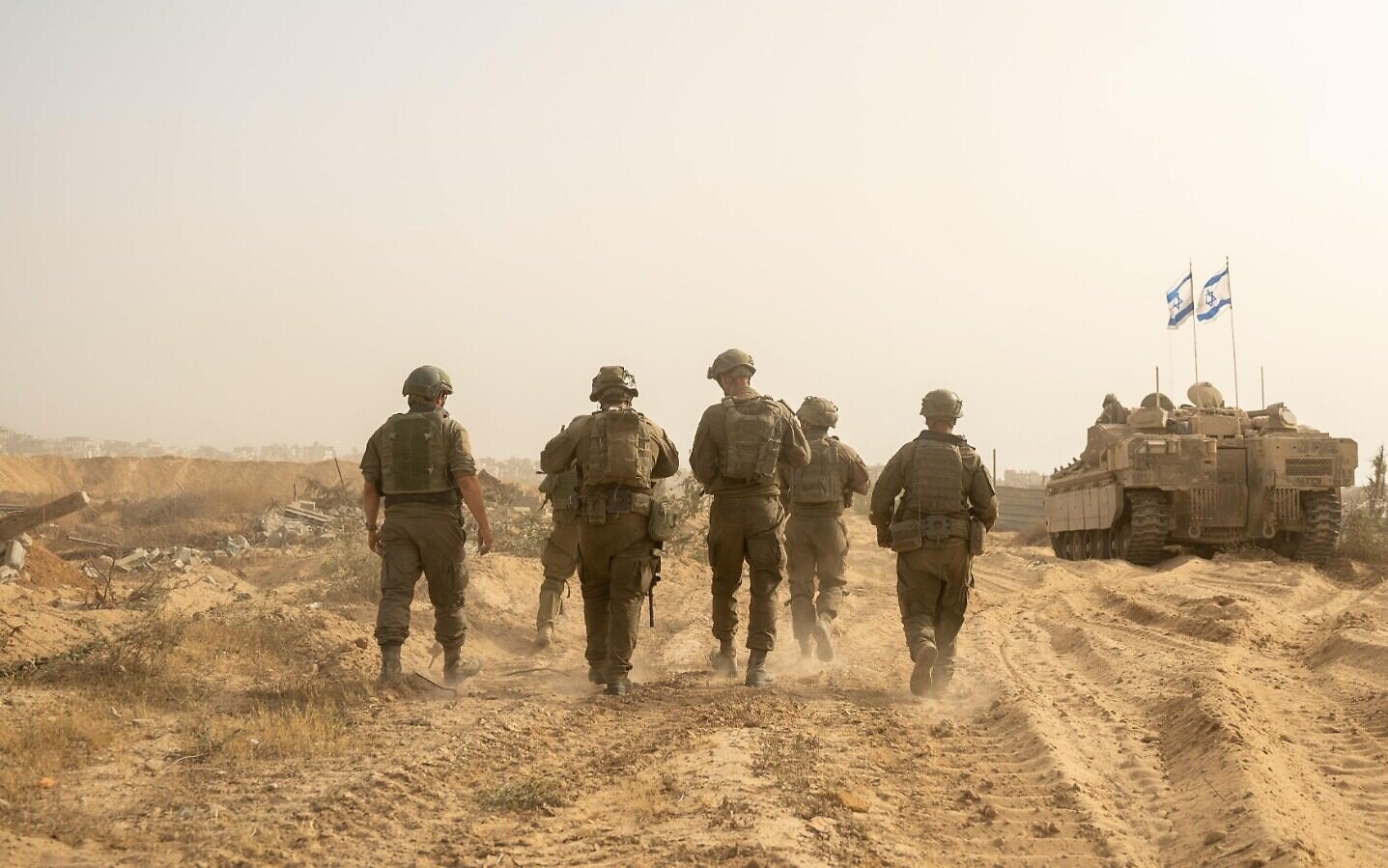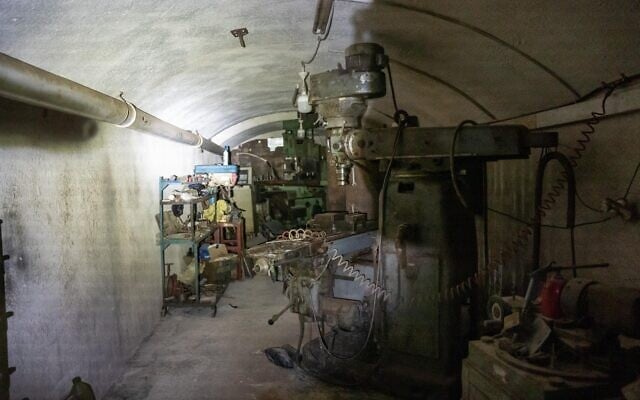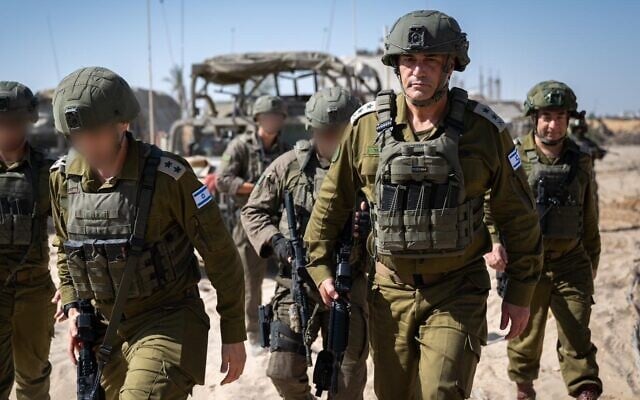



The Israel Defense Forces said Sunday that it aims to occupy 75 percent of the Gaza Strip’s territory within two months as part of its new offensive against the Hamas terror group.
Israel on March 18 resumed its attacks against Hamas with a surprise wave of airstrikes, ending a two-month ceasefire. The IDF has since deployed five divisions to the Strip — amounting to tens of thousands of troops — and is poised to launch a wide-scale ground offensive aimed at defeating Hamas’s military wing and its civil rule in Gaza, should the terror group not agree to release the hostages it is holding.
When the major ground offensive is launched, the Palestinian population will be pushed into three small zones in Gaza: a new “safer zone” in the Mawasi area on the southern Strip’s coast, where Israel previously declared a “humanitarian zone”; a strip of land in central Gaza’s Deir al-Balah and Nuseirat, where the IDF has not operated with ground forces; and the center of Gaza City, to which many Palestinians returned during the ceasefire earlier this year.
According to the IDF’s current estimates, some 700,000 Palestinians are residing in the Mawasi area, 300,000-350,000 are in central Gaza, and around one million are in Gaza City.
This means that Gaza’s 2 million population will be pushed into an area amounting to just 25% of the Strip when the IDF launches its expanded ground operation.
The IDF will then capture, clear of Hamas infrastructure, raze most buildings, and hold for the foreseeable future the rest of Gaza, including all of Rafah, Khan Younis, and the towns north of Gaza City.
According to the IDF’s plans, which were seen by The Times of Israel, it should take just two months to capture 75% of Gaza from the moment the operation goes ahead. Currently, the military is in control of about 40% of the Strip’s territory.
Military officials have said that the IDF is shifting its focus away from trying to eliminate as many terror operatives as possible — which had been the focus from the beginning of the war — and instead is centering on capturing territory and destroying Hamas’s infrastructure.
The terror group constructed in Gaza an estimated 900 kilometers (559 miles) of tunnels, yet so far, only 25% of them have been destroyed, according to the military. The IDF has argued that its main focus has been on Hamas’s attack tunnels and those used as command centers or for weapons manufacturing — the majority of which have been destroyed — rather than the numerous tunnels that the terror group uses to move around the Strip.
The army believes that Hamas can indeed be defeated by destroying its military wing — including all of its infrastructure — along with targeting its civil rule, capturing the territory, and preventing it from controlling the humanitarian aid entering Gaza.
Defeating Hamas would enable the release of the remaining 59 hostages the terror group is holding — just 20 of whom are believed to be alive — the IDF has argued.
Still, Israeli political officials have not held any meaningful discussion on who would run Gaza “the day after” Hamas.
On Sunday, during a visit to Gaza, IDF Chief of Staff Lt. Gen. Eyal Zamir said the fighting against Hamas was “not an endless war.”
“We are intensifying our activity in accordance with the orderly plan. Hamas is under tremendous pressure; it has lost most of its assets and its command and control,” Zamir said during a tour of Khan Younis with Southern Command chief Maj. Gen. Yaniv Asor.
The IDF has said that the aid entering Gaza before the collapse of the ceasefire was being used by Hamas to stay in power. Much of the aid would be captured by the terror group, and it would either use the consignments of supplies itself or sell them to the population at increased prices, to pay for the salaries of its operatives and to recruit more members.
Hamas has been struggling to pay salaries in the past few months, according to the IDF, since Israel halted the entry of aid on March 2, after the first phase of the latest ceasefire and hostage release deal concluded.
A new humanitarian aid delivery mechanism is set to start operations on Monday morning, though it has come under criticism and skepticism from aid groups.
The IDF has helped set up four aid distribution hubs in Gaza for the mechanism, which will be operated entirely by a private American security company, while the military provides the outer layer of security.
Three of the sites are in the Rafah area, which will serve those in Mawasi and possibly also those in central Gaza; and a fourth site is in the Netzarim Corridor area of central Gaza, for Palestinians in Gaza City or those in the northern portion of central Gaza.
A representative of a Palestinian family will come to the distribution hub and collect a five-day supply of food from the American company. The IDF expects that each hub can serve 300,000 people per week. Aid trucks carrying supplies for hospitals and flour for bakeries would continue to be sent into Gaza for the time being.
The military said Sunday that since the resumption of fighting in the Gaza Strip, it had struck over 2,900 targets, killing at least 800 terror operatives, among them some 50 senior officials and mid-level commanders, and over a dozen terrorists who participated in the October 7 onslaught.
The numbers refer to terror operatives whose deaths have been confirmed by name and ID number, though the military estimates that many more have been killed.
Hamas claims that over 3,785 Palestinians have been killed in that time. The figure has not been verified and does not differentiate between civilians and combatants.
The IDF said there have been no recent changes to its airstrike policy, including what sort of collateral damage and how many civilian casualties are permissible during operations in Gaza.
According to the IDF, there has also been no change to the amount of collateral damage in strikes in practice, and the combatant-to-civilian deaths ratio has remained relatively the same throughout the war, with two to three civilians killed for every dead Hamas terror operative.
The military said that it is working to minimize the number of civilian casualties, and stresses that Hamas uses Gaza’s civilians as human shields, fighting from civilian areas, including homes, hospitals, schools, and mosques.
The Hamas-run Gaza health ministry says more than 53,000 people in the Strip have been killed or are presumed dead in the fighting so far. Israel says it has killed some 20,000 combatants in battle as of January and another 1,600 terrorists inside Israel on October 7.




